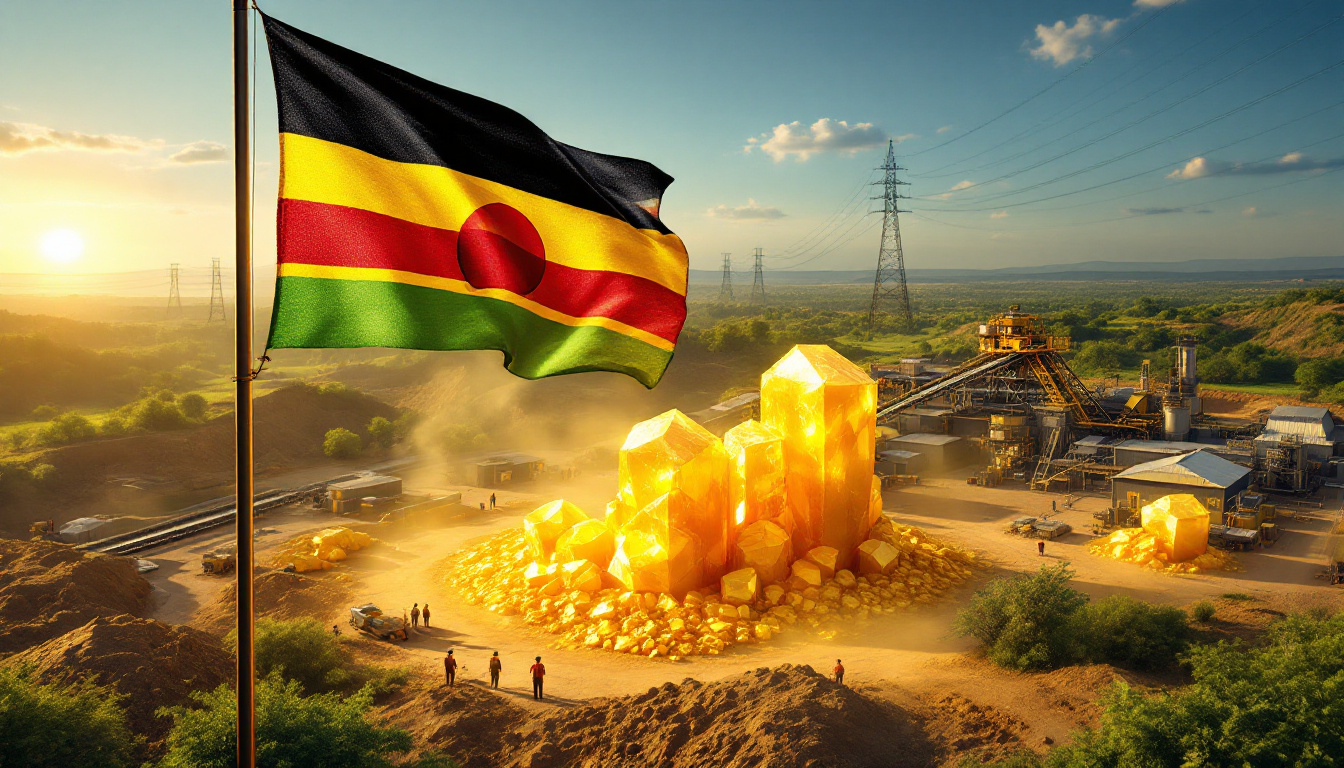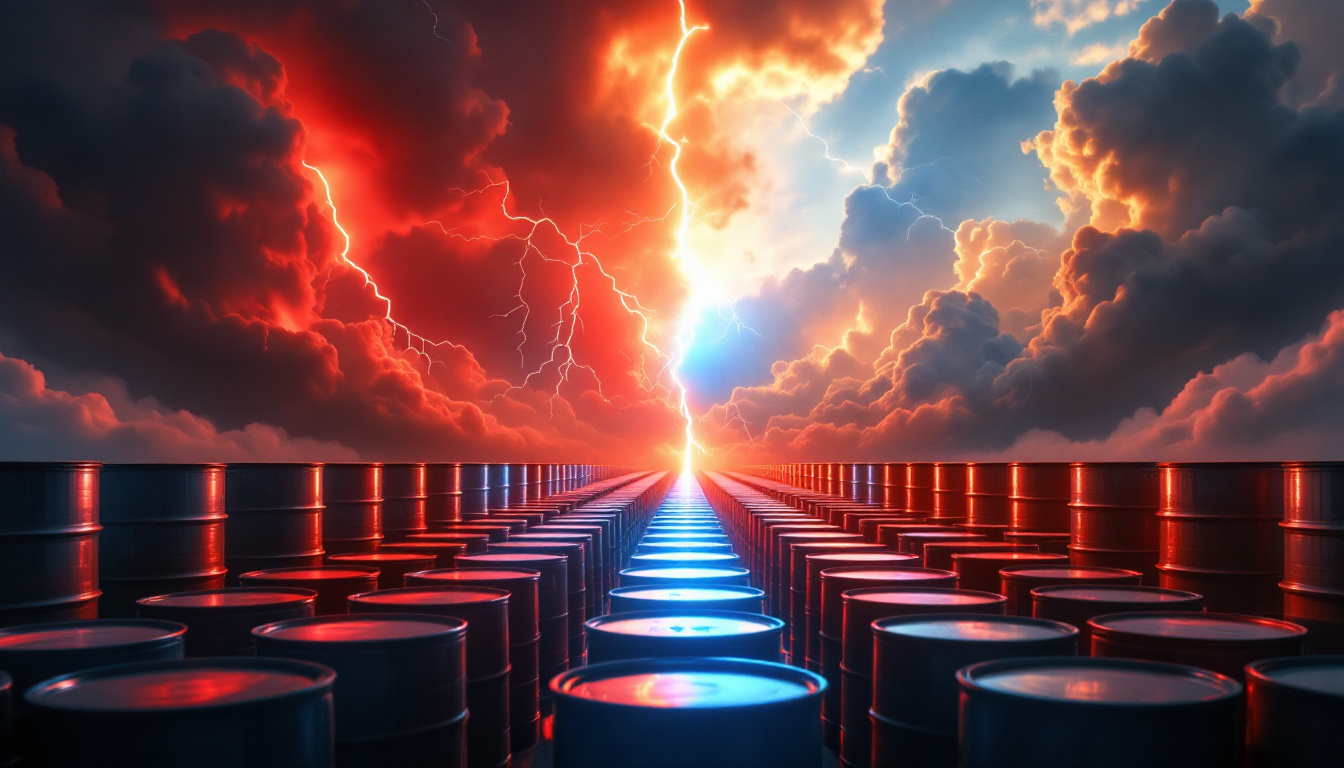Understanding Uranium Production in the United States
The landscape of uranium production in the United States has undergone significant transformation over the decades, reflecting broader shifts in energy policy, market dynamics, and global nuclear industry trends. Once a dominant player in global uranium supply, the US now finds itself at a critical juncture where domestic production capabilities have diminished while strategic importance has heightened. Those interested in understanding the broader context may find a comprehensive guide to global uranium production helpful for comparison.
The Current State of US Uranium Production
Historical Context and Production Decline
American uranium production has experienced a dramatic decline from its heyday in the 1980s when output exceeded 43.7 million pounds annually. This golden era of uranium mining has given way to a much more constrained reality, with the United States now importing approximately 95% of its uranium requirements to fuel nuclear reactors.
Currently, only two active uranium producers operate within the United States, representing a fraction of historical capacity. This significant drawdown in domestic production capability has created what many industry experts view as a strategic vulnerability for the country's energy security and nuclear supply chain.
The trajectory of US uranium production took a particularly sharp downward turn following the 2011 Fukushima nuclear incident in Japan. This catastrophic event triggered a prolonged bear market in uranium prices, making many domestic operations economically unviable and accelerating the industry's contraction.
Key Production Regions and Resources
Despite the overall decline, several regions remain significant for the future of US uranium production. Texas stands as a cornerstone of domestic operations, hosting important In-Situ Recovery (ISR) facilities that leverage the state's favourable geology and regulatory environment.
Wyoming and South Dakota contain additional important uranium deposits, with several projects in various stages of development or maintenance. These western states offer geological formations particularly well-suited to modern extraction techniques.
New Mexico holds substantial uranium resources but presents a more challenging regulatory landscape. As Bill Sheriff, Executive Chairman of enCore Energy, explains: "The real issue there is you aren't in a red state, you're in a very blue state. New Mexico, the permitting hurdles in terms of the state have not been attempted yet, and nor will they be by anyone that's not walking hand-in-hand with the indigenous communities."
US uranium reserves are estimated at approximately 31 million pounds at production costs under $30/lb. However, when considering higher-cost resources, the total potential supply increases substantially, providing a latent capacity that could be activated under favorable market conditions.
How Does In-Situ Recovery (ISR) Technology Work?
The Technical Process Explained
In-Situ Recovery represents the dominant extraction method for uranium production in the United States, offering significant advantages over conventional mining approaches. The process works by dissolving uranium in place using carefully formulated solutions of oxygenated water.
This uranium-rich solution is then pumped to the surface for processing at specialized facilities where the uranium is separated, concentrated, and prepared for further refinement. The technology minimises surface disturbance while efficiently targeting uranium deposits in permeable sandstone formations.
Sheriff provides a particularly illuminating analogy for understanding the ISR process: "The uranium is like a candy coating on an M&M, coating each sand grain individually." This visualisation highlights the need for solutions to contact individual uranium-bearing sand grains for effective extraction.
The process requires sophisticated water flow management to ensure comprehensive contact with uranium deposits. When properly executed, ISR operations typically achieve recovery rates exceeding 80% within just four months, compared to 12-15 months in conventional operations – a critical advantage for project economics and cash flow generation.
Advantages and Challenges of ISR
Environmental benefits represent one of ISR's primary advantages, with minimal surface disturbance compared to conventional mining methods. The technique eliminates the need for open pits or underground tunnels, significantly reducing the visible footprint of uranium production in the united states.
The method also offers lower capital and operating costs than traditional mining, making projects viable at price points that would challenge conventional operations. Additionally, the rapid recovery cycle creates faster cash flow generation, improving project economics and investment returns.
However, this quick recovery presents a double-edged sword for operators. Sheriff notes: "We get 80% plus of our recovery in four months… that's a wonderful thing, but it's a double-edged sword." The rapid extraction requires constant drilling and development of new wellfields to maintain production levels, creating operational challenges for sustainable output.
What's Driving the US Uranium Renaissance?
Supply-Demand Fundamentals
The global uranium market is experiencing structural deficits as production struggles to meet demand. This fundamental imbalance has supported a price recovery from the post-Fukushima lows and created renewed interest in US production assets.
Major producers have implemented significant production cuts in recent years, further constraining global supply. These strategic decisions by industry leaders have helped rebalance the market while highlighting the fragility of global uranium supply chains.
New uranium projects worldwide face significant delays and technical challenges, compounding supply concerns. As Sheriff observes: "You look around the entire uranium sector and you see nothing but delays, nothing but production shortfalls." This trend has particularly affected large-scale conventional mining projects, which typically require longer development timelines and greater capital investment.
Existing inventories that previously cushioned supply disruptions are being steadily depleted, increasing reliance on primary production. This drawdown of secondary supplies removes a historical buffer that helped moderate price volatility in uranium markets.
Policy and Strategic Considerations
Nuclear power's increasingly recognised role in achieving climate goals has renewed interest in uranium as a fuel source. As countries seek to decarbonise their electricity sectors while maintaining reliable baseload generation, nuclear energy has reemerged as a critical component of energy transition strategies.
The establishment of a strategic uranium reserve by the US government highlights growing national security concerns regarding fuel supply dependencies. This initiative aims to reduce vulnerability to supply disruptions from geopolitically sensitive regions like Kazakhstan and Russia, which currently dominate global production. Understanding the impact of Russia's uranium export ban on global supply chains provides additional context for these strategic concerns.
Proposed domestic production incentives aim to revitalise the US uranium industry by creating more favourable economics for American operations. These policy interventions reflect a growing consensus around the strategic importance of maintaining domestic uranium production capabilities.
The industry also benefits from increasing recognition of nuclear energy's reliability and minimal carbon footprint. As grid stability concerns grow amid renewable energy expansion, nuclear power's consistent generation profile offers valuable complementary capabilities to intermittent renewable sources.
Operational Challenges in US Uranium Production
Technical and Regulatory Hurdles
Lengthy permitting processes create significant barriers to entry for new uranium projects. These regulatory procedures can extend development timelines by years, increasing costs and delaying production capabilities when market conditions might otherwise support expansion.
State-level regulations vary dramatically across production regions, with what Sheriff characterises as "blue states" presenting additional challenges for development. These varying regulatory approaches create a patchwork of requirements that companies must navigate when considering project locations.
Social license considerations, particularly regarding relationships with indigenous communities, have become increasingly important for project advancement. Sheriff emphasises this point regarding New Mexico resources: "The permitting hurdles… nor will they be [attempted] by anyone that's not walking hand-in-hand with the indigenous communities."
Water management complexities in arid production regions present both technical and regulatory challenges. Many prime uranium production areas face water scarcity issues, requiring careful stewardship of water resources and compliance with stringent environmental protection standards.
Financial and Market Obstacles
The capital intensity of uranium production creates significant financial risks for developers and operators. Projects typically require substantial upfront investment before generating any return, creating challenges for capital raising in an industry with historical volatility.
Long development timelines further affect investment returns by extending the period between capital deployment and revenue generation. This extended payback period increases project risk profiles and influences financing costs for uranium ventures.
Contract pricing structures significantly impact operational profitability in the uranium sector. Unlike many commodities that trade primarily on spot markets, uranium sales often rely on long-term contracts with utilities, creating complex pricing dynamics that affect producer economics.
Cost control challenges have intensified in inflationary environments, pressuring margins even as uranium prices have recovered. Many US operations currently face all-in production costs averaging above $40 per pound, requiring sustained higher prices to ensure profitability.
The Future of US Uranium Production
Growth Potential and Expansion Plans
Existing producers are focusing intensively on operational efficiency improvements to enhance margins and competitiveness. These initiatives target cost reductions across mining, processing, and restoration activities to strengthen economic resilience.
Permitted assets represent a particular advantage in the current environment, providing near-term production growth opportunities without the lengthy development timelines facing new projects. Companies holding these assets can respond more quickly to favourable market conditions.
Strategic focus has shifted decidedly toward production over exploration, reflecting the industry's prioritisation of cash flow generation. As Sheriff puts it, the emphasis is on "pounds in the can" rather than expanding resource estimates through additional drilling.
Production increases appear increasingly likely as market fundamentals strengthen, with permitted projects positioned to advance as uranium prices sustain levels above operational breakeven points. This expansion potential represents a significant reversal after years of contraction in US uranium production.
Market Outlook and Investment Implications
Supply constraints are expected to persist amid growing demand, supporting a bullish long-term outlook for uranium markets. These structural imbalances create favourable conditions for producers capable of bringing material to market in the near term, opening up strategic uranium investment opportunities for those looking to enter the sector.
China's aggressive nuclear expansion program is adding significant pressure to global uranium demand. The country's construction of dozens of new reactors represents the largest growth driver in nuclear generation capacity, with corresponding implications for fuel requirements.
Small modular reactors (SMRs) represent an emerging demand source with potential to further tighten uranium markets. These next-generation nuclear technologies promise improved economics and flexibility, potentially expanding the market for nuclear power and its fuel requirements.
Premium valuations increasingly accrue to companies with existing production capabilities rather than those holding undeveloped resources. This market differentiation reflects investor preference for near-term cash flow over longer-term development potential in the uncertain uranium sector.
How Does US Production Compare Globally?
International Competitive Landscape
Kazakhstan dominates global production with approximately 43% market share, representing the single largest source of primary uranium supply. The country's extensive use of ISR technology has enabled low-cost production that sets global price benchmarks.
Canada and Australia represent other major production centers, hosting some of the world's highest-grade uranium deposits. These countries benefit from stable political environments and established mining traditions that support uranium operations.
US production currently represents less than 1% of global supply, a stark contrast to its historical position as a market leader. This diminished role highlights both the challenges facing domestic production and the potential for significant growth from a low base.
Technical expertise in ISR technology provides a competitive advantage for US operators. As Sheriff claims, enCore has "the deepest bench strength in terms of ISR capabilities anywhere this side of Kazakhstan," positioning the company to efficiently develop and operate domestic assets. For those seeking deeper insights, the uranium mining market analysis and investment insights provides valuable perspective on these competitive dynamics.
Strategic Advantages of US Production
Political stability compared to other uranium-producing regions offers a significant advantage for US operations. While Kazakhstan dominates production, its geopolitical alignment with Russia creates supply security concerns for Western utilities.
Proximity to US utilities reduces transportation risks and logistics costs for domestic producers. This geographic advantage can translate into preferential supply relationships, particularly as concerns about supply chain security intensify.
Domestic production reduces reliance on geopolitically sensitive sources, addressing growing concerns about energy independence and critical mineral supply chains. This strategic consideration has gained prominence amid broader efforts to secure supplies of materials deemed essential for national security.
Potential premium pricing for US-origin material may emerge as utilities seek to diversify supply sources and reduce dependence on imports from politically sensitive regions. This origin premium could enhance the economics of domestic production beyond spot market pricing.
FAQ About US Uranium Production
What extraction methods are used for uranium in the US?
In-Situ Recovery (ISR) stands as the dominant method for US uranium production, having largely replaced conventional mining techniques. This approach involves dissolving uranium underground using oxygenated solutions and pumping the pregnant liquor to surface facilities for processing, according to the U.S. Energy Information Administration.
The process creates significantly less environmental disruption than conventional mining, eliminating waste rock disposal and minimising surface footprint. This reduced impact helps address environmental concerns that have historically challenged uranium mining.
ISR technology works optimally in permeable sandstone formations with specific geological characteristics that enable solution flow. These favourable conditions exist across several US uranium districts, particularly in Texas and Wyoming.
Recovery rates typically exceed 80% within the first few months of operation, providing rapid payback on development costs. This accelerated recovery profile fundamentally changes project economics compared to conventional mining approaches.
How does US uranium production impact energy security?
Domestic production significantly reduces reliance on foreign uranium sources, addressing a critical vulnerability in the nuclear fuel supply chain. With the US currently importing approximately 95% of its uranium needs, increased domestic supply would enhance energy independence.
Russia and Kazakhstan together represent significant sources of imports, creating geopolitical risk for US nuclear utilities. Recent tensions with Russia have highlighted these vulnerabilities and accelerated interest in developing more secure supply alternatives.
Increasing domestic production supports long-term energy independence by ensuring reliable fuel supplies for the nation's nuclear fleet. As the largest nuclear power generator globally, the United States has particular interest in securing these supply chains.
The establishment of a strategic uranium reserve represents concrete recognition of these security concerns, creating a buffer against supply disruptions while supporting domestic production capabilities.
What are the economics of uranium production in the US?
Production costs average above $40 per pound for many US operations, reflecting the higher cost structure of domestic production compared to Kazakhstan and other low-cost jurisdictions. These economics require sustained higher uranium prices to support industry growth.
Current spot prices around $90/lb provide healthy margins for existing producers, creating favourable conditions for production increases from permitted assets. This price environment represents a significant improvement from the post-Fukushima period of depressed markets.
Long-term contracts provide revenue stability for producers, enabling investment planning despite spot market volatility. These agreements typically include floor prices that protect operators during market downturns while allowing some participation in price increases.
Capital costs for new projects range from $50-100+ million depending on scale and location, representing significant investment requirements for industry expansion. These capital needs influence the pace at which new production can respond to market opportunities.
How do environmental regulations affect US uranium production?
Strict federal and state regulations govern all aspects of uranium production, establishing comprehensive requirements for environmental protection. These regulations address groundwater protection, surface disturbance, radiation management, and site restoration.
Permitting processes can extend beyond 5 years for new projects, creating significant lead times for bringing new production online. This regulatory timeline influences industry responsiveness to market signals and shapes development strategies.
Groundwater protection represents a primary regulatory focus, requiring extensive monitoring and control measures. ISR operations must demonstrate containment of production solutions and implement comprehensive groundwater restoration programs.
Restoration requirements add significant costs to project economics, often extending for years after active production ceases. These long-term obligations factor prominently in project planning and financial assurance requirements.
Regulatory approaches vary significantly between jurisdictions, creating material differences in development potential across uranium-bearing regions. As Sheriff notes, these differences can determine whether resources remain in the ground or become viable production assets.
Understanding uranium market dynamics, geopolitical tensions, and future prospects provides essential context for navigating the complex landscape of uranium production in the united states as the industry continues to evolve in response to changing market conditions and strategic imperatives.
Ready to Capture the Next Major Mineral Discovery?
Stay ahead of the market with Discovery Alert's proprietary Discovery IQ model, which instantly notifies investors about significant ASX mineral discoveries, turning complex data into actionable insights. Explore why historic discoveries generate substantial returns by visiting Discovery Alert's dedicated discoveries page and begin your 30-day free trial today.




